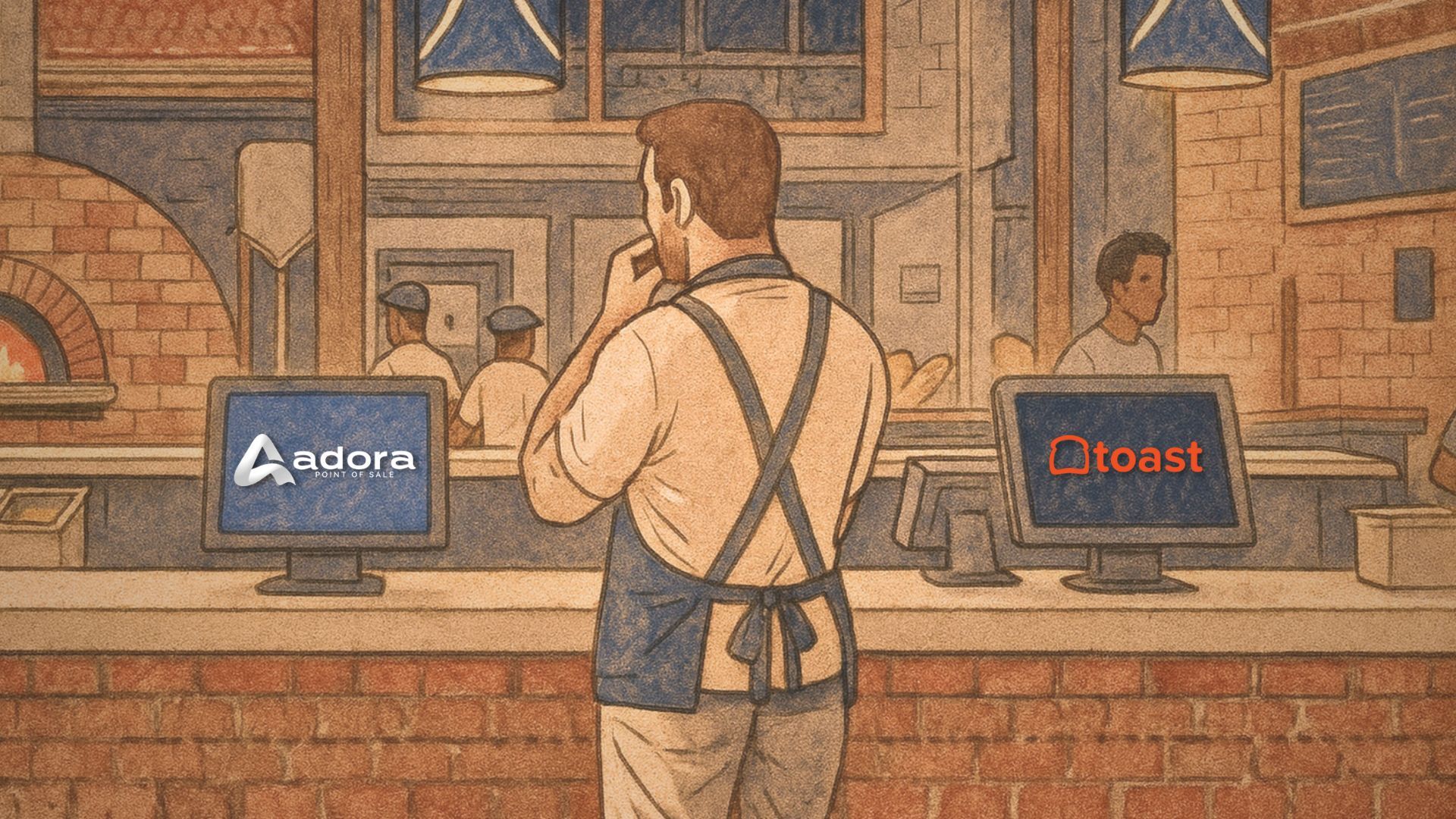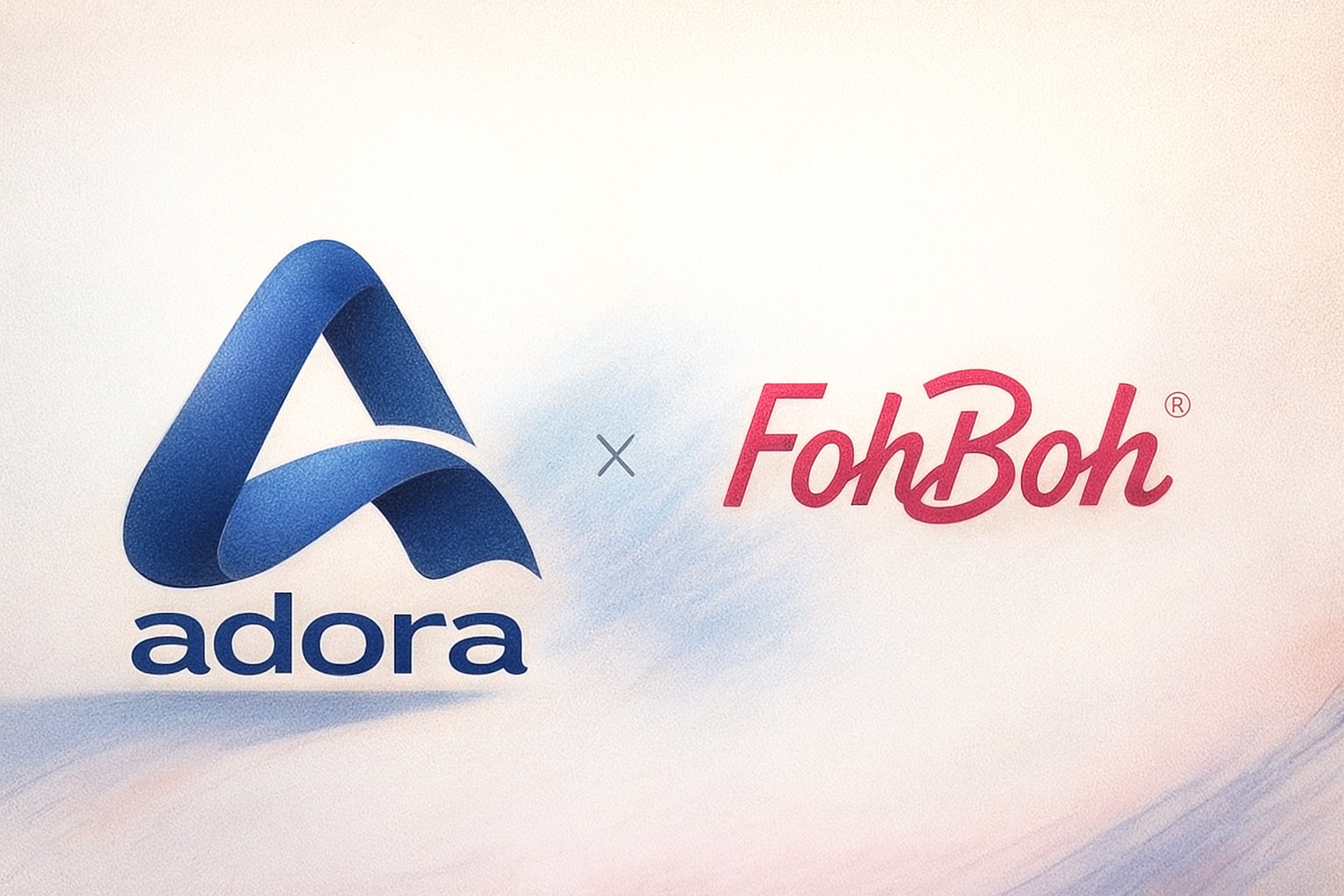The Pizza Problem Toast Can’t Solve (Part 2)
RESTAURANT TECHNOLOGY
In Part 1 of Toast Might Work for Restaurants, but Adora Works for Pizza, we explored how Adora’s pizza-specific foundation gives pizzerias the operational edge they can’t get from a general-purpose system like Toast. From hardware flexibility that lets operators spin up new stations on the fly, to open-payment freedom that keeps leverage in their hands, Adora empowers pizza shops to scale, adapt, and control costs. Most importantly, its pizza-native workflows are built around makelines, halves, and timed orders designed for you to turn the chaos of a Friday-night rush into a streamlined rhythm. In short, Toast may be a capable restaurant POS, but Adora is an operating system built for the world of pizza.
Delivery that’s a profit center, not a patchwork
Delivery is where generic POS setups often start to look like a stack of add-ons. Adora treats delivery as a golden goose:
- Zones, fees, and ETAs tuned to your geography and traffic patterns.
- Driver dispatch, your way: batching, round-robin, or manual assignments, with live driver tracking and automated delivery texts for customers.
- Order regrouping when a big pie comes out early, or a driver finishes faster than expected.
- Native online ordering that feeds the POS the same way as in-store tickets, keeping workflows inside your kitchen smooth and predictable.
Can Toast do delivery? Absolutely. But when delivery is central to your P&L, native tools keep your operations simpler, data cleaner, and accountability tighter.
Takeaway: If delivery is occasional, a generalist big-box approach is workable. If delivery is core revenue, Adora’s built-in dispatch and tracking give you speed and control you’ll see on every run.
Multi-location control: chain-ready from day one
For growing brands, you need corporate guardrails and local nuance. Adora’s enterprise portal, also known as ‘Adora Cloud, lets you push menu changes, pricing, promos, and coupons across stores in minutes while giving GMs the ability to tailor offers for their neighborhood (downtown lunch vs. late-night campus, for example). Unified reporting surfaces labor-to-sales, channel mix, coupon ROI, and delivery performance across the fleet in real time.
Toast supports multi-location operations as well, and many groups can succeed on it. The difference you’ll feel with Adora is how quickly you can replicate best practices store-to-store without rebuilding workflows or second-guessing whether a specific module works the same way in every market.
Takeaway: If you’re opening store #2 or #50, Adora’s mix of centralized control and local flexibility makes rollouts faster and consistency easier.
Inventory, loyalty, and marketing: built in and pizza-smart
Adora bakes in the pieces pizzerias use daily: ingredient-level tracking with thresholds and vendor management, multi-store stock views, and alerts that protect razor-thin margins. Loyalty and marketing are pizza-aware, segmented by how guests actually buy pizza (slice regulars, family bundles, late-night delivery), run automated win-backs, and see closed-loop impact on real tickets.
Toast offers strong ecosystems and integrations here; plenty of operators thrive with its partner apps. If you prefer fewer contracts and logins, Adora’s built-in depth reduces the number of moving parts and the finger-pointing when something breaks.
Takeaway: If you don’t mind juggling multiple vendors' contracts to bolster your inventory oversight, Toast will work. If you prefer unified tools with pizza-specific logic, Adora outshines its competition.
Support and day-to-day reliability: Talk to people who speak “Pizza”
When the dinner rush hits, and something feels off, you don’t want to explain what “half on the veggie side” means. Adora’s 24/7 US based support team is steeped in pizza workflows, and the cloud architecture means updates roll out consistently without device-by-device version drift. That translates into fewer firefights at peak and faster resolution when you need a human.
Takeaway: Both companies invest in support. The practical edge with Adora is domain fluency, quicker response times, faster fixes, and calmer shifts.
What this looks like on a real Friday night
- 6:05 PM: Online orders spike. Deferred tickets slotted earlier feed the makeline in a smooth sequence instead of a cliff.
- 6:22 PM: A large half-pepperoni/half-veggie with light cheese on the veggie side is entered in seconds, priced correctly, and hits the right stations with crystal-clear notes.
- 6:48 PM: Dispatch batches two tight runs; drivers leave with accurate ETAs and guests get proactive texts. The phone rings less.
- 7:15 PM: A downtown-only slice promo fires automatically for tomorrow’s lunch crowd.
- 8:04 PM: You push a price tweak across all stores for Saturday. It’s live in minutes, quicker than sending a text to your GM.
That’s not magic. That’s specialization.
So… which POS should your pizzeria lean towards?
If your concept is dine-in first with simple orders and minimal delivery, a generalist POS like Toast can fit fine. But if your week is won or lost on customization, delivery, and multi-location consistency, a pizza-first platform will simply run the business better. Adora’s agnostic approach to hardware and payments, combined with its dedicated pizza and delivery tools, keeps your operation fast, your team confident, and your costs predictable.
Bottom line: Toast might work for some restaurants. Adora doesn’t just work for pizza; it’s designed for it.



